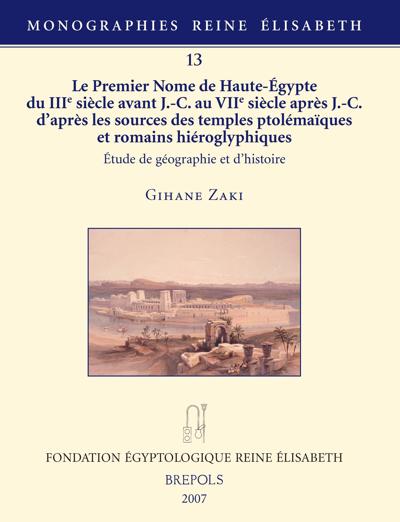
Signs of Life
Ancient Egyptian Script, Language, and Writing: Studies in Honour of Orly Goldwasser
Niv Allon (ed)
- Pages: 252 p.
- Size:216 x 280 mm
- Illustrations:89 b/w, 14 col., 42 tables b/w., 1 maps b/w
- Language(s):English, French
- Publication Year:2024
- € 140,00 EXCL. VAT RETAIL PRICE
- ISBN: 978-2-503-60863-1
- Paperback
- Available
- € 140,00 EXCL. VAT RETAIL PRICE
- ISBN: 978-2-503-60864-8
- E-book
- Available
- Contains contributions in Open Access
Ancient Egyptian Hieroglyphs and other writing systems, their semiotic value, and the language they record in a unique volume of collected papers.
Dr. Niv Allon, Curator in the Department of Egyptian Art at The Metropolitan Museum of Art, and a Research Associate at the Institute for the Study of the Ancient World, New York University. He is the author of Writing, Violence, and the Military Images of Literacy in Eighteenth Dynasty Egypt (1550- 1295 BCE) (2019) and the co-author of Ancient Egyptian Scribes: A Cultural Exploration (2017).
In recent decades, the Ancient Egyptian realm of pictorial script and meta-textuality has been the focus of many research projects. Foremost among them is the innovative and ground-breaking sub-field that was helmed by Prof. Orly Goldwasser, exploring the study of classifiers and the ways in which Ancient Egyptian Hieroglyphs mirror the Ancient Egyptian mind. Taking Goldwasser’s pioneering work as its inspiration, this volume draws together contributions from some of the leading voices in Egyptology and neighbouring fields to illuminate different aspects of the use of Ancient Egyptian Hieroglyphs, their semiotic value, and of the language that they record, as well as looking more broadly at the use of signs, pictorial systems, script, learning processes, and classifications. Together, these chapters offer a unique and multi-layered picture of the ways in which Ancient Egyptian language and Hieroglyphs emerged within Ancient Egyptian culture, and the means by which they interacted with other script systems and languages.
List of Illustrations
Introduction: Signs of Life
Section I. Sign and Icon
1. Le signe composite L7 de la déesse Serket
Nathalie Beaux
2. Two Seals from a Late Bronze Age Burial at Tel Bene Beraq
Irit Ziffer, Ron Be’eri, Dor Golan, Ayelet Dayan, and Gil Haklay
3. Layers of Meaning: Iconicity Patterns in Anatolian Hieroglyphic Inscriptions
Annick Payne
4. Non-Textual Markings from Thebes. New Interpretations and Lasting Enigmas
Julia Budka
Section II. Classifiers in Ancient Egyptian and Broader Perspectives
5. The ‘Determinatives’ of Ancient Egyptian Hieroglyphs are ‘Root Classifiers’. How Egyptology and Linguistics Met to Show It
Colette Grinevald
6. Classifying beyond Classifiers
Jean Winand
7. Variation in Classifier Use: Counting People in Burmese
Dörte Borchers
8. Ridiculing the Nomads. On Dehumanizing Strategies in the Old Babylonian School
Gebhard J. Selz
Section III. Linguistic Variation
9. The Secondary Future Paradigm tw=j/tw=k/tw=tw/noun+r+ Infinitive and Its Reflex in ‘égyptien de tradition’
Pascal Vernus
10. The King’s Purest Joy. Some Remarks on Two Hitherto Neglected Epithets of Queen Nefertiti
Roman Gundacker
11. The West Semitic Alphabet in Iron I and IIA or c. 1100–800 BCE. A Recently Transformed Picture, for Once, Based on Stratified Inscriptions
Benjamin Sass
12. Learning to Write in Hebrew
Ruth A. Berman
Section IV. Archaeological and Cultural Currents
13. Familiarly Foreign: Canaanite Gods in New Kingdom Egypt (1550–1070 BCE)
Niv Allon
14. A Foreign Bloom: Narrating the Tale of p-r-ḫ across Egyptian Texts
Haleli Harel
15. The Meaning of Golem: Psalm 139.16 and Afroasiatic Lexicology in Dialogue
Thomas Schneider
16. Horse Names and Chariots
Anthony Spalinger
17. On the Origin of Multi-Statuary Ka-Temples
Manfred Bietak




